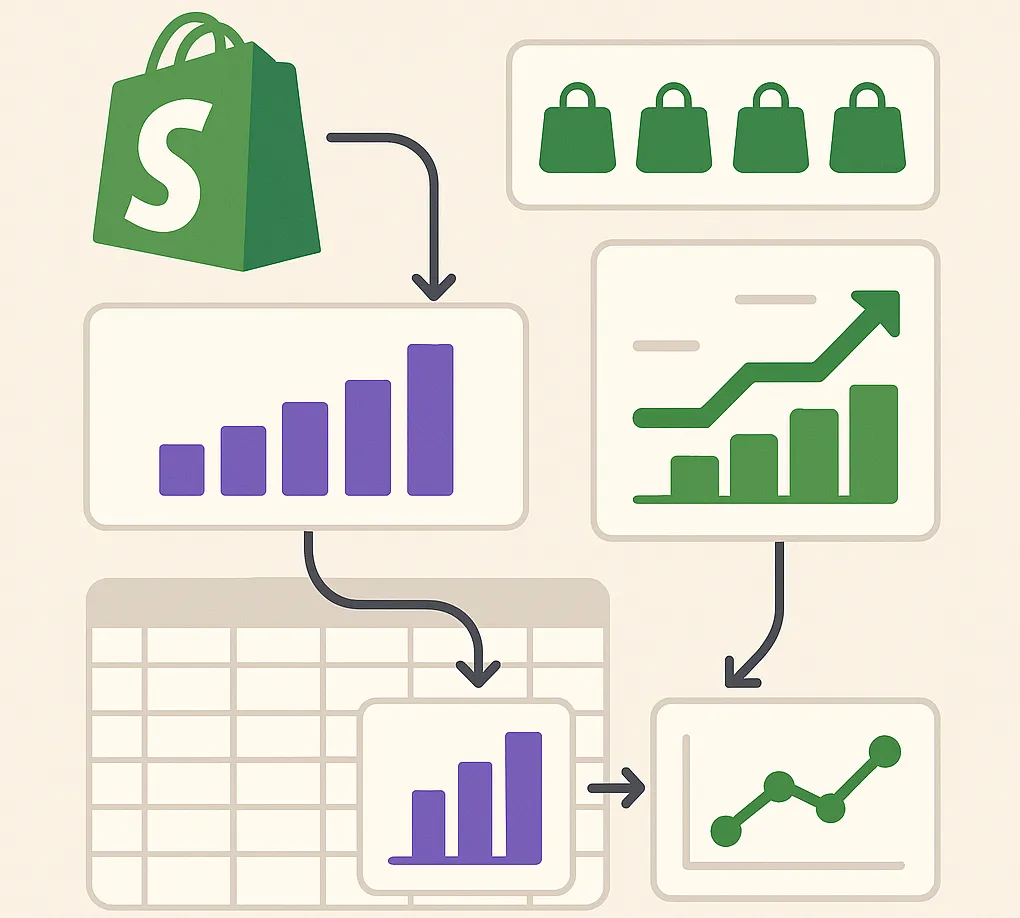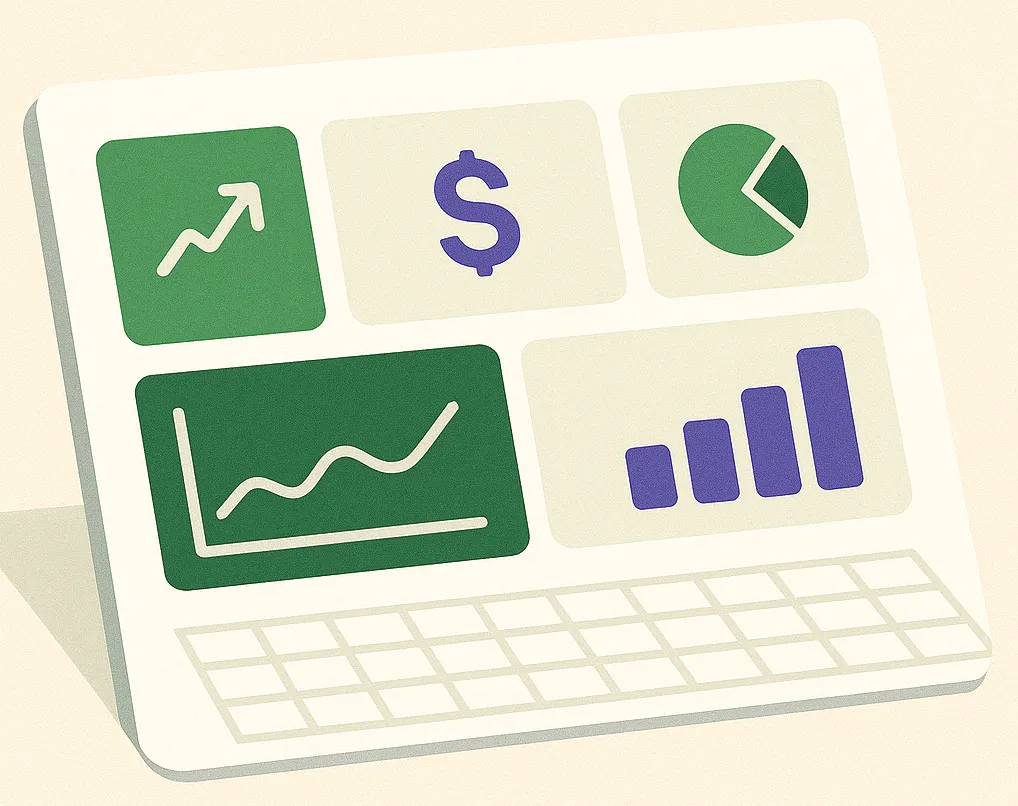Your Shopify Dashboard is Just the Beginning
The Shopify dashboard is a great starting point for understanding your store's performance. But to uncover the deep insights that drive real growth, you need to go further. The standard dashboard can't easily answer questions like:
- Which products have the highest profit margins after accounting for fees?
- What is the lifetime value of customers acquired during a specific marketing campaign?
- How is my sales performance trending month-over-month, broken down by SKU?
To answer these questions, you need to get your data out of Shopify and into a spreadsheet. This guide will show you which reports are essential and how you can automate them.
5 Essential Shopify Sales Reports You Should Be Running
Here are five reports that will give you a comprehensive view of your business performance. All of these can be automated with Spreadsheet Broccoli's Shopify connector.
1. Daily/Weekly Sales Summary
What it is: A high-level overview of your key sales metrics: gross sales, net sales, discounts, shipping, taxes, and total sales.
Why it matters: It's the daily pulse of your business. Automating this report saves you from having to check the dashboard constantly and allows you to build a historical trend analysis over time.
2. Sales by Product (Product Performance)
What it is: A detailed breakdown of sales performance for each product or variant. Key metrics include units sold, gross sales, discounts applied, and net sales per SKU.
Why it matters: This report helps you identify your best-selling products, slow-moving inventory, and the real-world impact of your discount strategies on a per-product basis.

3. Sales by Discount Code
What it is: A report that shows how many times each discount code was used and the total sales amount associated with it.
Why it matters: It's the only way to accurately measure the ROI of your promotional campaigns. See which offers are driving sales and which are being ignored by your customers.
4. Customer Lifetime Value (CLV)
What it is: A report that segments your customers and calculates their total spending over time. You can segment by acquisition source, first product purchased, and more.
Why it matters: CLV is one of the most important metrics for sustainable growth. It tells you which marketing channels are bringing in the most valuable customers, allowing you to focus your ad spend effectively.
5. Payout Reconciliation Report
What it is: A detailed report that matches every Shopify payout to the specific orders, refunds, and fees included in it.
Why it matters: This is crucial for accurate accounting. It bridges the gap between your gross sales and the actual cash that hits your bank account. (For more on this, see our article on solving payout reconciliation headaches).
Ready to automate your Shopify reporting and unlock deeper insights?
Connect Your Shopify StoreHow to Automate These Reports
Setting this up with Spreadsheet Broccoli is a simple, three-step process:
1. Connect your Shopify store: Securely authorize your account in just a few clicks.
2. Choose a recipe: Select one of our pre-built Shopify report recipes, like "Product Performance Analysis" or "Sales Summary".
3. Schedule it: Choose how often you want the report to run (e.g., daily, weekly) and whether you want it in Excel.
Once configured, the reports will be automatically generated and delivered to your dashboard, giving you a consistent, reliable source of truth for your business performance.
